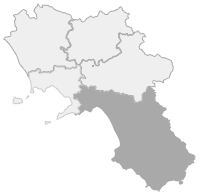The cavity in the rock, extraordinarily spacious, offered safe shelter and refuge.
The presence of unlimited freshwater was another positive aspect of that place, to also live there and not only to stop temporarily. Water was the only obstacle because it was covering the floor of the cave. Therefore, they created an elevated route and they did the same for spaces used daily. The poles supporting the stilts were intended to tell to future generations, many centuries later, the story of that settlement of the second millennium BC. inside the Alburni. One of the secrets that the Pertosa Caves have been able to jealously guard over time, until the first explorations of the end of the nineteenth century, which revealed their existence to the world. And their astonishing beauty.
The Pertosa Caves or Angel Caves (Grotte dell’Angelo) stretch below the northern part of the Alburni, 263 meters below sea level, in correspondence of the territories of three Municipalities: Pertosa, whose name (from pertusus, perforated) indicates the presence, Auletta and Polla. As well as the other cavities, gorges and ravines frequented and characteristic of that Campania area, they are due to the karst nature of the massif of the Alburni. However, compared to the other hypogeal systems, it is the only one with a navigable river inside it: the Negro river.
You can see it once you have entered in the Sala delle Meraviglie. And you navigate it for 20 meters on a flat-bottomed, which moves forward by pulling overhead steel ropes, up to the large entrance from where you can continue on foot along an illuminated path up to Sala del Trono and Grande Sala, 24 meters high. This is the basic itinerary but you can also continue towards the Sala delle Spugne, Sala dei Pipistrelli up to Sala del Paradiso, after having enjoyed the view of a wonderful underground waterfall. A trip in the heart of the earth, between tunnels and galleries, constantly accompanied by concretions with an amazing variety and richness of forms. In the last few years, they were the suggestive settings for the so-called “Speleo-theatre” (theatre events taking place in the caves), with set-ups of “Dante’s Inferno in the Caves” and, recently, “: Ulysses : the trip to Hades”
Another particularity of the Grotte dell’Angelo is the villaggio palafiticcolo (pile-dwelling village), which occupied the whole ante-cave, the only hypogeum in Europe. It wad inhabited by the first inhabitants of Pertosa, shepherds of the Middle Bronze Age, who, in addition to the stilts of which we can still see the poles, they left testimonies of their daily life in the caves: from the milk boiler jars to make cheese, grinders, terracotta spoons, bone awls, fragments of “bucchero” (vases) and of big pitho (vases) ceramic. Recovered in the Thirties, before a dam for the exploitation of the water of the caves for hydroelectric purposes, submerged everything. The draining of the one-cave in 2009 has re-emerged and archaeological site and has allowed new studies and new retrieval of items. All the materials of the caves are currently divided between the prehistoric ethnographic Museum of Romem the National archeological Museum of Naples and the Provincial Museum of Salerno.
The life of the inhabitants of the Bronze Age is illustrated and rebuilt in a virtual way and with workshops for children by the MIDA foundation, the Integrated Museums for the Environment.
Ancients considered the caves as a sacred place and they celebrated the cults for waters there until Middle Age, when they were interrupted. Nowadays, Saint Michael Archangel is honored there.


